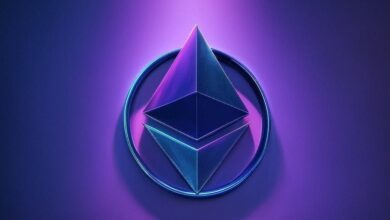The Paradigm Shift: Shaping Bitcoin’s Long-Term Viability

Inscriptions and ordinals, particularly BRC-20 tokens, are gaining traction within the Bitcoin ecosystem, presenting significant implications for Bitcoin’s long-term viability. However, the scarcity and size limitations of inscriptions, along with the increasing demand for block space and the need for sustainable transaction fees, pose critical challenges for the Bitcoin network. In a recent report, HAYVN research team emphasized the importance of understanding the paradigm shift in Bitcoin’s use case for evaluating its future trajectory and its security model. The report discussed the challenges faced by the Bitcoin mining industry and the importance of developing new use cases.
Ayush Tripathi, Research Analyst at HAYVN, stated that “Our internal perspective centers around the paramount importance of utility, value proposition, technical capabilities, and market opportunities. The incorporation of Ordinals and Inscriptions is poised to facilitate additional essential advancements within the Bitcoin ecosystem, ultimately fostering a sustainable rise in organic demand. The enduring viability of Bitcoin hinges upon the continuous desire for its core offering: block space.”
A primary distinguishing factor of inscriptions from NFTs is their direct storage on Bitcoin’s Layer 1 chain, resolving a common criticism faced by NFTs that rely on off-chain storage for metadata. This on-chain storage provides inscriptions with the durability and robust security offered by the Bitcoin network, making them appealing to investors. However, the surge in inscription and ordinal usage has led to congestion issues due to the limited block size. Although upgrades such as SegWit and Taproot have increased the block size, allowing for a maximum limit of 4MB data storage in the Witness portion of any Bitcoin block, this size restriction remains a significant concern for the Bitcoin network.
Unlocking Bitcoin’s Potential Growth: Innovation and Sustainable Miner Incentives
Bitcoin’s unique selling point lies in being the most trusted form of payment, but the lack of innovation poses a problem. While the introduction of inscriptions presents the possibility of increased fees and new revenue streams for miners, the long-term outcome depends on the level of innovation within the Bitcoin ecosystem. However, the development of decentralized finance (DeFi), non-fungible tokens (NFTs), and network infrastructure markets in the Bitcoin ecosystem has been relatively limited compared to Ethereum’s smart contract infrastructure.
Bitcoin currently lags behind Ethereum in usability, and its significant characteristic is the halving that occurs every four years. The halvings eventually reduce the bitcoin supply to zero, leading to a loss of miner incentives. This is a major concern as bitcoin cannot exist without miners, raising the question of how to increase transactions to provide another income source for them.
HAYVN suggests that Bitcoin’s long-term viability depends on leveraging innovations and economic mechanisms that incentivize miners, primarily through coinbase rewards and transaction fees. However, relying too heavily on coinbase rewards raises concerns about the long-term sustainability of Bitcoin’s economic structure, as indicated by Bitcoin’s minor revenue breakdown. The decreasing coinbase rewards due to the halving process raise concerns about the future sustainability of transaction fees.
Eventually, transaction fees will become the sole source of compensation for miners, serving as the security budget for the primary blockchain layer (L1). However, historically, transaction fees have constituted a relatively small portion of miner revenues, given that Bitcoin is mainly used for asset transfers. This raises concerns about the long-term viability and sustainability of relying solely on transaction fees for miner compensation.
The Bitcoin mining industry currently faces challenges such as rising energy costs, increasing interest rates, and fluctuations in Bitcoin prices. To ensure the long-term survival of Bitcoin, it is crucial to explore new use cases that generate demand for block space and increase revenue from transaction fees.
Although there may be potential issues with layer 2 solutions and ordinal uses, their introduction would stimulate innovation. Ethereum serves as an example, as it witnessed a surge in decentralized applications and use cases despite facing problems. HAYVN stresses the importance of innovation in Bitcoin’s underdeveloped DeFi system, advocating for the initiation of innovation now instead of waiting until closer to the halving deadline. Bitcoin’s innovation can progress faster than Ethereum’s due to existing use cases and studies. Replicating Ethereum’s success would enhance Bitcoin’s security and benefit miners.
Would Investors Shift Towards More Innovative Platforms if Bitcoin Fails to Innovate?
Disagreements within the bitcoin community regarding innovation and upgrades led to multiple forks. Some people do not see a purpose for Bitcoin beyond being a store of value or the “gold” of the cryptocurrency world. The concern is whether Bitcoin will continue to innovate or remain stagnant, especially with the second halving approaching. This raises questions about whether investors will shift their focus to more innovative platforms.
Investors seek confidence in assets that have withstood the test of time and Bitcoin needs to prove its long-term viability. The impact of innovation on Bitcoin’s future is a matter to consider down the line. If Bitcoin fails to innovate, it is likely that Ethereum will eventually become the dominant global settlement layer, potentially encroaching on Bitcoin’s status as a store of value, says Ayush. As worldwide adoption increases, investors may seek assets that inspire greater confidence, potentially leading to a decline in Bitcoin’s influence.
While this concern may not be prominent presently, we should not underestimate the importance of miner incentives for network security. The miners’ interests are not solely aligned with those of the investors. To maintain their incentives, increasing innovation becomes essential. This allows miners to establish an independent income stream directly from transactions, rather than relying solely on halving rewards. Consequently, transaction costs would increase to motivate miners, potentially limiting Bitcoin’s suitability as a payment method.
While some argue that Bitcoin should remain solely a store of value to avoid network congestion and high transaction costs, pushing for innovation could lead to developments in Layer 2 solutions, similar to what Polygon accomplished with Ethereum. As such, although the adoption of other use cases for Bitcoin might cause short-term congestion in the mempool and undermine Bitcoin’s primary selling point, developers will eventually create Layer 2 solutions to reduce costs. To gauge bitcoin’s future, it would be helpful to study Ethereum’s history, says Ayush. Examining Ethereum’s vision and the journey it has undertaken from 2016-2017 until now provides valuable insights.
To ensure the sustained growth and viability of Bitcoin, there is a pressing need for continued innovation, exploration of new use cases, and the expansion of the ecosystem to rival other blockchain platforms.
Enhancing Bitcoin’s Scalability and Minimizing Transaction Fees through Lightning Network
The Lightning Network, a second-layer solution built on top of the Bitcoin blockchain, is being implemented by crypto exchanges to address network congestion issues and the surge in transaction fees. By maintaining open and off-chain transaction channels, the Lightning Network reduces network congestion and transaction fees. However, to increase widespread adoption of Bitcoin, it is crucial to significantly increase the Lightning Network’s capacity.
Recently, the Taproot Assets Protocol released an updated testnet version (v0.2) to tackle congestion on the Bitcoin network caused by increased Bitcoin ordinals and BRC-20 tokens. This protocol, when deployed on the mainnet, enhances the Lightning Network and offers several improvements. It allows for the off-chain transfer or minting of an unlimited number of assets in a single on-chain transaction, effectively reducing fees. Leveraging the Taproot upgrade, the protocol also enables more complex smart contract execution and supports multi-asset minting, optimizing the scalability of the Lightning Network. The ultimate aim is to transform the Lightning Network into a multi-asset network capable of rivaling traditional payment systems.
While the Lightning Network provides fast and low-cost transactions, it also disrupts the balance of miner rewards. As the network relies more on transaction fees than block rewards, it is crucial to strike a balance between financial incentives for miners and the cost of transactions for users. This balance ensures the network’s security while maintaining affordability and accessibility for users.





